Posts Tagged ‘Modesty’
- In: All | Allah الله | Islam | Islam News | News | Women In Islam
- 23 Comments
Topless Tunisian protester at the center of controversy
Conflicting reports on the whereabouts of a young Tunisian woman have circulated following her participation in the “sextremist” collective, Femen. On March 11, Amina Tyler, a 19 year-old Tunisian posed for Femen. Marking the organisation’s presence in the North African country, Tyler posed semi-nude with the words “My body belongs to me, it is not the source of anyone’s honour” written across her torso.
Adel Almi, leader of the conservative religious organisation Moderate Associate for Awareness and Reform, told Assabah News that her actions deserved 80-100 lashes, but may also warrant death by stoning. Following his comments, Femen representatives told Tunisian and international media that they had lost contact with Tyler and feared her missing.
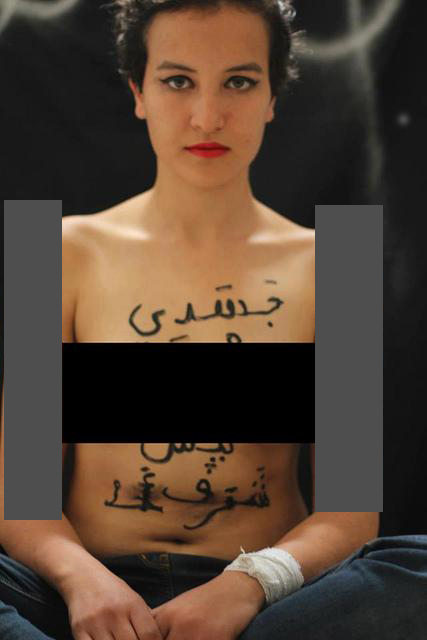
The Girl Who started all this..
Femen France: After we received this information, Femen activists tried to contact the young Tunisian to no avail. Her phone has been off. We fear for her life.
Femen representatives added that they were told Tyler had been taken to a psychiatric ward, a detail picked up by several media outlets including France 24 and PolicyMic.
In an interview with Tunisia Live, Tyler’s lawyer, Bouchra Bel Haj Hmida, denied those claims:
She is not missing and “has never been in a psychiatric facility,” Bel Haj Hmida told Tunisia Live, contradicting reports that surfaced last week and have been widely circulated on the internet.

It takes one topless Tunisian young lady to make the buzz now in Huffington Posts, now, worldwide. Another Tunisian lady just won the chemistry worldwide Olympiad and was awarded the title of best innovator of the year 2013.



Note:I’d love to see who visit my website,your views about website. Click here to leave your feedback.

Stay Connected With Free Updates
 |
 |
 |
If you cannot visit this site everyday and would like to receive our articles everyday via email, please click here and enter your email address in the new window.
PLEASE CHK YOUR EMAIL AFTER SUBMITTING EMAIL,YOU MUST CONFIRM SUBSCRIPTION ! |
![]()
- In: All | Allah الله | Islam | Islam News | News | Women In Islam
- 4 Comments
Muslim women send message to Femen [News]
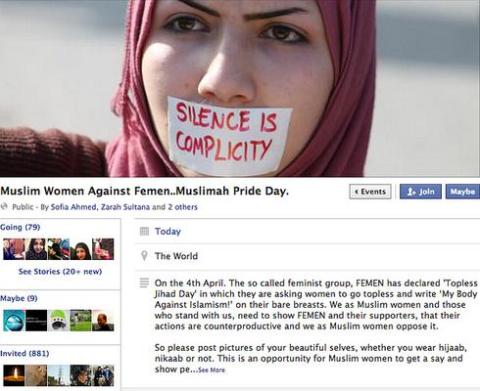
Muslim women have launched a campaign to send a message to “sextremist” collective Femen. “Muslimah Pride Day” was organized in response to Femen’s self-declared “Topless Jihad Day”, a day of topless protests around the world to support Tunisian Femen activist Amina Tyler.
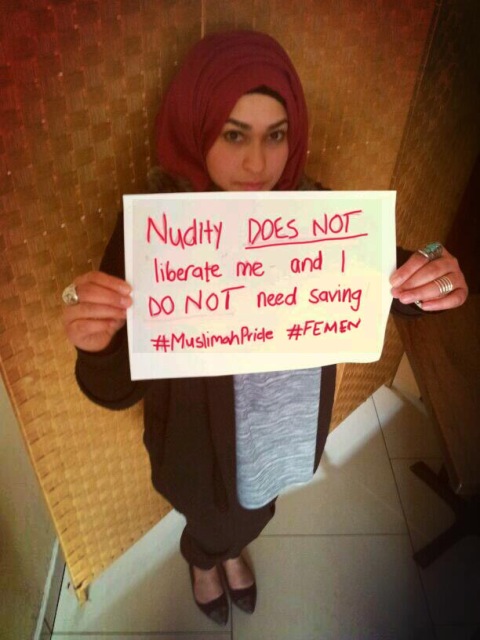
The organisers of the counter-protest urged Muslim women to speak out for themselves and assert their diverse identities:
https://twitter.com/TheLatif/status/319831103361912833This event is open to ALL muslim women, Hijaabi’s Nikaabis and women who choose not to wear it. Muslimah pride is about connecting with your Muslim identity and reclaiming our collective voice. Most importantly it is about diversity and showing that muslim women are not just one homogenous group. We come in all shapes and sizes, all races and cultural backgrounds. Whether we choose to wear hijaabs or not is nobodies business but ours. So please get clicking, get creative, get loud and proud. #Muslimapride
netizens criticized Femen’s campaign and said it reinforced stereotypes about Muslim women:
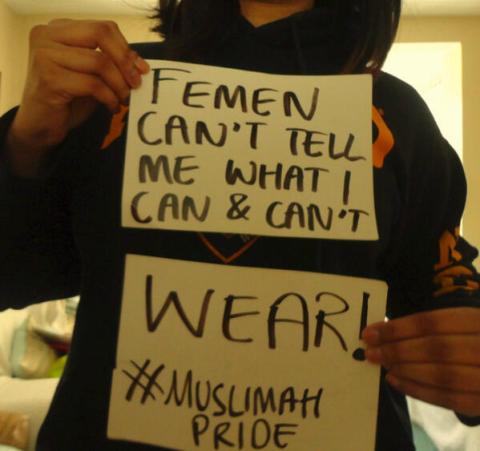
Mimicking Femen’s tactic of posting topless photos to social networks, “Muslimah Pride Day” participants shared photos of themselves expressing their opposition to “Topless Jihad Day”:
https://twitter.com/TheLatif/status/319856196490256384Femen’s April 4 protests proceeded as planned. “Topless Jihad Day” events occurred around the world and were widely shared online. Femen groups posted the pictures below on their Facebook pages:
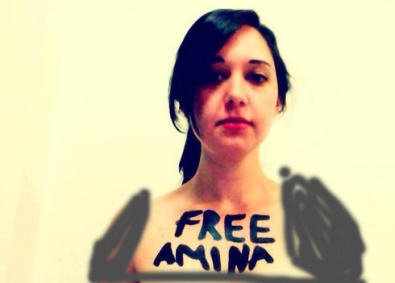

Nude Women in-front of Mosque
This is not something new…from last 5 years ,im taking views of muslim women,What they feel being musim women.you can read real cmnts from real muslim women here.
What do you think of the “Muslimah Pride” campaign? Tell us in the comments below.



Note:I’d love to see who visit my website,your views about website. Click here to leave your feedback.

Stay Connected With Free Updates
 |
 |
 |
If you cannot visit this site everyday and would like to receive our articles everyday via email, please click here and enter your email address in the new window.
PLEASE CHK YOUR EMAIL AFTER SUBMITTING EMAIL,YOU MUST CONFIRM SUBSCRIPTION ! |
![]()
- In: All | Allah الله | Islam | Islam News | News | Women In Islam
- 1 Comment
Paris: police arrest four Muslim women
The scene, which was filmed by journalists from Le Parisien, a French daily newspaper covering both international and national news, took place at the Trocadéro, a square that stands across the river from the Eiffel Tower. The four women, including one wearing a headscarf, were checked for IDs before being escorted out of the square by dozens of police officers.
In the video one of the women says: “One of us is wearing a headscarf and policemen have just checked our IDs, there is no problem, but we have been asked to leave the square.”
“We were doing some sightseeing as our uncle is visiting us, and this is what happens,” another one adds. “Now we are forced to follow them so we can be interrogated,” she continues as the four women are being shoved by policemen.
At the end of the video, another woman, accompanied with an elderly woman wearing a scarf, says they were also banned from entering the square.
On Saturday dozens of police personnel were deployed in the area as a precautionary measure ahead of an anti-Islam film protest banned by the French authorities. Overall 50 people were arrested that day, including the four women in the video.



Note:I’d love to see who visit my website,your views about website. Click here to leave your feedback.

Stay Connected With Free Updates
 |
 |
 |
If you cannot visit this site everyday and would like to receive our articles everyday via email, please click here and enter your email address in the new window.
PLEASE CHK YOUR EMAIL AFTER SUBMITTING EMAIL,YOU MUST CONFIRM SUBSCRIPTION ! |
![]()
- In: All | Allah الله | HIJAB | Islam | Women In Islam
- 9 Comments
10 Majors Excuses why not wear Hijab…
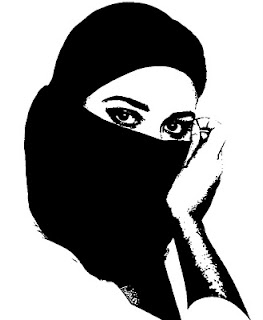
# 1 excuse : “I don’t think it is necessary to wear the hijab.”
We must asked if the person is truly convinced of the truth that is Islam?
And the clear answer given is: Yes, she is convinced, for she responds “Laa ilaaha illallah!” (There is no God but Allah), and then she says: “Muhammadun rasoolullah!” (Muhammad is the Messenger of Allah). Therefore, she is convinced of Islam as a belief system and a way of life
So now isn’t hijab then a part of Islamic Law and an obligation? If you are convinced of Islam, how then can you not be convinced of its orders?
What do we call a person who says they believe but who nonetheless does not do what Allah or His Messenger have ordered? Certainly they can in no way be described as those whom Allah speaks of in this verse:
The only saying of the faithful believers when they are called to Allah and His Messenger to judge between them is that they say: ‘we hear and obey ‘ and such are the successful. [Sura An-Noor 24:51]
#2 Excuse: “My parents prevent me from wearing it and I can’t disobey my parents”
How can you obey your parents and disobey Allah, Who created you and your parents?
The Messenger of Allah (sallallahu alaihi wa sallam) said in these words of wisdom: There is no obedience to the created in the disobedience of Allah. [Ahmed]
Obedience to parents is not limited except in one aspect, and that is if they order to disobedience of Allah. Allah said: “But if they strive with you to make you join in worship with Me others that of which you have no knowledge, then obey them not.” [Sura Luqmaan 31:15]
#3 Excuse : “My Job does not allow me to wear an Islamic dress”
It is not permissible for the Muslim woman to leave her home in any instance unless her clothing meets the conditions of Islamic hijab and it is a duty of every Muslim woman to know what they are. If you must go out, then do so only with the correct hijab, seeking the pleasure of Allah and the degradation of Shaytan. If your place of work does not allow it then try your best to find another job.
if you are really truthful in your intention and correctly determined in wanting to wear hijab you will find a thousands hands of good assisting you and Allah will make it easy for you! Is He not the One Who says: And whoever fears Allah and keeps his duty to Him, He will make a way for him to get out (from every difficulty) and He will provide him from sources he never could imagine. [Sura At-Talaaq 65:2-3]?
#4 Excuse: “It is too hot to wear a hijab”
Allah gives an example by saying:
Say: The Fire of Hell is more intense in heat if they only understand. [Sura At-Taubah 9:81]
Understand that Shaytan has trapped you and he is dragging you from the heat of this world to the heat of the Hellfire. Free yourself from his net and view the heat of the sun as a favor and not an affliction especially if it reminds you of the intensity of the punishment of Allah which is many times greater than the heat you feel now.
#5 Excuse: “I ‘m afraid that if I wear the hijab I will take it off later because others did it
If everyone was to apply that logic then they would have left the Deen in its entirety! They would have left off salat because some would be afraid of leaving it later. They would have left fasting in Ramadan because so many are afraid of not doing it later but If you hold tight to the causes of guidance and taste the sweetness of faith you will not neglect the orders of Allah after having held to them.
#6 Excuse: “I will never find a husband if I wear it”
Why will you want to marry someone who does not want to follow Allah’s commands?
Any husband, who desires that you be uncovered and adorned in public in defiance of and in disobedience to Allah, is not a worthy husband in the first place. As Allah stated: But whosoever turns away from My reminder (i.e. neither believes in the Qur’an nor acts upon its teachings) verily for him is a life of hardship and We shall raise him up blind on the Day of Resurrection. [Sura Ta Ha 20:124]
#7 Excuse: “I can’t not hide the beauty that Allah blessed me with”
Have you forgotten these verses:
And do not show off their adornment except only that which is apparent [Sura An-Noor 24:31] and the statement of Allah Subhanah Wa Taala: Tell your wives and your daughters and the women of the believers to draw their cloaks all over their bodies [Sura Al-Ahzaab 33:59]?
And is there a greater blessing and favor upon the woman than guidance and hijab?
#8 Excuse: “I will wear it when Allah guides me”
Are you serious?
Haven’t He already guided you by sending His Noble Quran and making you a muslim?
#9 Excuse: “I am still young I will wear when I get older”
How can you guarantee your own life until tomorrow?
The Angel of Death is visiting and waiting at your door for the order of Allah Taala to take your life at any moment. Death doesn’t discriminate between the young or the old.
We should all race to obedience to answer the call of Allah:”Race with one another in hastening towards forgiveness from your Lord and Paradise the width whereof is as the width of the heavens and the earth. [Sura Al-Hadeed 57:21]
#10 Excuse: “If I wear it i will be labeled and people will stare at me”
The hijab is a high form of worship that is not subject to the opinions of people and their orientations and choices because the one who legislated it is the Most Wise Creator.
In the way of seeking the pleasure of Allah and in hope of His Mercy and success in His Jannah and throw those statements against the wall! Dust your shoulders off from their evil and focus on the prize. Hold tight to the rope of Allah by your molars and follow the example of the striving and knowledgeable Mothers of the Believers and the female companions (radiallahu anhum ajmaeen).
Your body is on display in the market of Shaytan seducing the hearts of men. The hairstyles, the tight clothing showing every detail of your figure, the short dresses showing off your legs and other body parts all anger the Merciful and please the Shaytan. Isn’t it time to liberate yourself?
In our Race to Jannah let’s get on the train of repentance, before it passes by our station. Deeply considering, what is happening today before tomorrow comes. Thinking about it, now, before it is too late!



Note:I’d love to see who visit my website,your views about website. Click here to leave your feedback.

Stay Connected With Free Updates
 |
 |
 |
If you cannot visit this site everyday and would like to receive our articles everyday via email, please click here and enter your email address in the new window.
PLEASE CHK YOUR EMAIL AFTER SUBMITTING EMAIL,YOU MUST CONFIRM SUBSCRIPTION ! |
![]()
A Lecture on “Modesty” at Kings College, London
by Revert sister Myriam Francois-Cerrah(British Actress)
Women’s clothing is a bizarrely emotive topic. It does baffle me that it can seemingly arouse such strong emotions in people, whatever side of the spectrum they’re coming at the discussion from!
I don’t really want to discuss the headscarf for the sheer fact that represents a deepening of what is, in my opinion, an already grossly exaggerated fixation with it. I prefer to discuss the value of modesty and its contribution to female empowerment.

I said ‘female empowerment’, not Muslim female empowerment and this is crucial.
The Prophet is described in the Quran as a mercy to ‘mankind’ and as Muslims, we believe that Quranic values were sent for the benefit of the whole of humanity – the question thus is – how, as European Muslims, do we draw values from our text, which can help to improve the lives of our fellow citizens and help propagate the universal values of human emancipation, enshrined therewith.
I’m going to focus on one value within the Islamic tradition, that of Modesty, which is both a central value of the Islamic faith and a powerful tool for the emancipation of the modern woman.
The Prophet Muhammad (peace be upon him) said: “Every faith has an innate character. The character of Islam is modesty.” – Al-Muwatta, Volume 47, Hadith 9
I take it as a given that there are norms of modesty enjoined by God upon all people, norms which can be found in all faiths, all traditions, including the Islamic tradition. I’m not going to go into the theological roots of Islamic dress, nor the evidence therewith, although I do no dispute their existence or validity.
The real question is how do we reconcile this facet of our faith with a world in which, let’s face it, nothing is anything unless it’s sexy.
The discussion on the headcarf or the ‘hijab’, or the ‘khimar’ cannot be disassociated from the broader context in which Muslim women are discussed. I do say “are discussed” in the passive sense, because it does so often feel like others, often white men in positions of power, talking about Muslim women (usually, poorer, often disenfranchised, brown women) without necessarily engaging Muslim women themselves in the discussions at hand.
To some extent, Muslim women have been taken hostage between two extreme perceptions a rigid conservative approach within the community and an ethnocentric and islamophobic approach, often found outside of it. The two outlooks share a number of things in common – most notably an unshakable belief in their view, which makes dialogue and discussion difficult..
Muslim women undeniably live in various countries where oppression masquerades as religion, whereas in some European countries, fundamentalist secularism masquerades as freedom.
France recently joined the ranks of countries like Iran and Saudi Arabia in being one of the few countries worldwide to regulate women’s clothing quite so strictly. In addition to the ban on headscarves in government buildings, in force since the 1990s, a recent law being passed through the Senate now forbids child minders from wearing headscarves, even when working for a private household. That’s right, a Muslim women would not be allowed to wear her scarf within a private home , on the grounds that this somehow represents an affront to France’s values of ‘laicite’ – one wonders just how shaky those values are if they can be undermined by a few nannies in headscarves.
Only recently, we saw the ‘burka ban’ debate raging across Europe and its enforcement in an increasing number of countries, where Muslim female garb is apparently, at this time of acute economic crisis, the most pressing issue on the political agenda – in France, in parts of Spain, Belgium, in the Netherlands, in Italy- where the president’s wild orgies with under-age minors were apparently minor concerns compared to the handful of Muslim women wearing face veils…
The Burqa debate has captured European imagination. Despite being worn by a fringe within a minority, the covering has emerged at the forefront of the European political map, and been met with near unanimous condemnation across the political spectrum. In Tarres, a village in north-east Spain, the parish council was debating the ban, despite none its 108 inhabitants actually wearing a burqa, while its nearby provincial capital, Lleida, formally passed a ban. Barcelona became the first major Spanish city to ban the use of face veils in municipal buildings and in Belgium, a country which can’t even agree on a national language, a parliamentary committee last year agreed to ban face veils in public.
In neighbouring France, the lower house of parliament approved the ban. President Sarkozy had stated his belief that the garment reduces women to servitude and undermines their dignity, saying the burqa is “not the idea that the French republic has of women’s dignity”. This, despite (or perhaps because?) not having included a single woman who wears the face veil in the committee set up to “discuss” the issue. In a move which presumably is not an affront to human dignity, Sarkozy announced that women wearing full-face veils would be turned away from hospitals, public transport and government buildings and his UMP colleague Frederic Lefebvre demanded that any woman breaking the proposed law, be “deprived of her rights”.
Meanwhile, the ripple effect of this discriminatory legislation is vindicating already widespread islamophobia and racism. French Muslims of Maghreb ancestry are already the victims of nearly 68 per cent of racist violence and in May, a Muslim woman’s veil was ripped off in what police describe as France’s first case of “burqa rage”.
So, clearly, the other parameter to the discussion on muslim women’s garb, is of course that of national identity.
Many of the countries where the ban was enforced are struggling with issues of national identity in our multicultural, globalized world where it is increasingly unclear what it means to be “British”, “Spanish” or “French” and where such questions are a welcome distraction from government’s inability to resolve more substantive issues of unemployment, debt and mounting poverty.
Modern France is very much in the midst of an identity crisis, just like, if not worse than, that being faced by the rest of Europe with the consequence that issues of secularism and immigration have become central to the presidential campaign.
The homogenous nature of Europe’s intellectual elites has, like broader society, begun to shift. This change has led to a questioning not so much of society’s guiding principles, but of some of their real world applications. This challenge to the hegemony of the older European elites in matters of culture and power continues to be filtered through the, as yet unburied spectre, of (post-?) colonial superiority. Historically, the colonised Arabs needed emancipation from their debased state of being through the imposition of “French” culture, the so-called “civilizing mission”. Today, many French can’t tolerate the thought these former barbarians turned citizens might have a say in defining modern French identity. The consequence is reactionary legislation aimed to somehow ‘preserve’ French culture.
The Dutch argued that burka does “not fit into our open society and women must participate fully.” One wonders what kind of an ‘open’ society goes around restricting women’s choice of attire and how exactly, such as ban, is likely to increase female participation, when in all likelihood, many of these women will chose to leave the house as infrequently as possible. Criminalising women in order to free them doesn’t exactly send an inclusive message to the women, so this perverse suggestion the ban is well meaning, is to be denounced for the political manoeuvring it truly is.
During the burka ban debate, many feminists, including in France and Italy supported the ban which saw French women denied access to basic services such as access to hospitals, government buildings and the underground. They supported the ban on the basis of a false assumption, namely that the banning of burka’s in Europe could represent a stance against the enforcement of the burka in Afghanistan.
In fact, women in Europe don’t generally wear a burka, the traditional garb imposed by the Taliban in Afghanistan, but a small minority of European Muslim women choose to wear the face veil, and most do so out of their free will. So how could women purporting to be supporting women, start advocating an imposition on other women’s dress code? Surely the sheer irony of it would be obvious? Alas it is not. And this is partly due to an inherited view of Muslim women, from the colonial era and orientalist literature, which presents Muslim women as submissive, oppressed creatures in need of saving – and sadly, that stereotype has taken an awfully long time to die out.
There is often a feeling Muslim women need to be saved! Even from themselves – undermining autonomy anyone?
And that needs to be recognised in the context of a continuity of the depictions of Muslim women as oppressed by their backward barbaric faith advocated and propounded in Orientalist literature to justify European colonial expansion. Needless to say, not much has changed. The invasion of Afghanistan was itself partly ‘legitimated’ through recourse to the ever fashionable theme of liberating Afghan women, by Mrs Laura Bush no less – feminist objectives cynically manipulated to support American imperialism. And what of Muslim women’s rights in today’s Afghanistan, ten years into the debacle – RAWA a leading independent political/social organization of Afghan women sidelined by the Karzai government. Selay Ghaffar, executive director of Humanitarian Assistance for the Women and Children of Afghanistan notes the window dressing of many of the posts in which Muslim women can be found, noting they’ve been largely kept out of the decision making positions, including on the future of Afghanistan whereby in 2010, no women were invited to a high profile London conference on the topic – Selay herself got in with a press pass!
Feminists often ask why Muslim women cover? The mistrust of ‘modesty’ lies partly in Europe’s own historical relationship to women’s clothing, the uncomfortable corsets and cumbersome dresses were designed to ensure women could be seen to be pretty, but not heard (or breath in some cases!)
There was also a reaction to the idea of a ‘male’ God telling women how to dress and what to do, something which is thankfully absent in the Islamic tradition. Abdel Hakim Murad points out: “Islamic theology confronts us with the spectacular absence of a gendered Godhead. A theology which reveals the divine through incarnation in a body also locates it in a gender, and inescapably passes judgement on the other sex. A theology which locates it in a book makes no judgement about gender; since books are unsexed. The divine remains divine, that is, genderless, even when expressed in a fully saving way on earth.”
Muslim woman writer, Sartaz Aziz, writes:
“I am deeply grateful that my first ideas of God were formed by Islam because I was able to think of the Highest Power as one completely without sex or race, and thus completely unpatriarchal . . .We begin with the idea of a deity who is completely above sexual identity, and thus completely outside the value system created by patriarchy.”
Thus, the very Western rebellion against a restrictive modesty imposed by a male God is not a battle Muslims need to fight and means as Muslims, the feminist antipathy towards religion may seem somewhat misplaced. (this is not the case when we look at its practitioners, where it is often entirely justified!)
Feminists rightly questioned the logic in women wearing clothes which made it impossible to sit comfortably, let alone indulge in worldly activities, which were left to the men.
In addition, many feminists today, myself included, question the value of investing so much female attention on our bodies, our looks and fashion when surely, there are more pressing issues –like discrimination, harassment and all round misogyny still affecting our daily lives. Even political representation isn’t a won battle – 2011 data compiled by the Inter-Parliamentary Union on female political representation in parliament indicated that Britain ranks 49, above Uzbekistan at 50 and below Eritrea….According to the Fawcettt society, at the current rate of progress it will take 200 years – another 40 elections – to achieve an equal number of women in parliament.. and despite nearly 40 years of equal pay legislation, women are still paid 17% less than their male counterparts for the same jobs.
To me, the obsession with women’s clothing often represent the sort of symbolic gestures towards “equality” which actually mask serious ongoing issues of inequality. The fact that female journalists and writers receive so much vitriol directed at very personal aspects of their person and underming their very presence in the public sphere, suggests we still have a long way to go. Helen Lewis Hasteley, a writer at the New Statesman recently pointed out that in response to an article she’d written, a male commentator wrote: “nice article love, now make me a sandwich”.
That said, the continued interest in muslim female garb shouldn’t be entirely dismissed. It comes within broader discussions, necessary discussions, in feminist circles over the ‘liberated body’ and what that actually means. In a society where our self-worth as women is so often premised on our looks, where according to Deborah Rhodes of Standford University ( “The Beauty bias”), virtually all women consider their looks as key to their self image – indeed, “over half of young women said they would prefer to be hit by a truck than be fat,” this is actually an important discussion in which more Muslim women should be engaged.
What does it mean to have a liberated body – our bodies having become battlegrounds for competing ideological and at times, commercial interests.
Does the idea that one might wish to limit visual access to one’s physicality in the public sphere such an outrageous notions when we’re fed a consistent diet of visual imagery which premises a woman’s worth on her physical attributes, over and above any other aspect of their person.
In other words, where rather than competing on equal terms with men, our beauty has become a yardstick from which to measure our worth, a competition in which we decide who the worthy and unworthy women are based on gracious genetics or a fervent commitment to a rigorous exercise and starvation regime.
It’s great you’ve become one of the few female MPs in our parliament, but if you don’t look ‘hot’ doing it, expect to be judged and berated publicly for your lack of ‘femininity’, in other words, your ability to live up to male penchants, and if you do look ‘hot’ doing it, expect your physicality to take precedence over your actions and for any and all attention to be focused on your sex appeal rather than any genuine contributions you may be making to the political domain. A la Louise Mensch…
Natasha Walters lists a number of particularly shocking examples in her book ‘Living Dolls’. When Ann Widecombe, the conservative MP appeared on Have I Got News For You in 2007, many of the jokes focused on her looks and how ‘unsexy’ she was said to be and when Harriet Harman, Labour MP called for more women in power in 2009, a commentator in the Spectator responded: “So-Harriet Harman, then. Would you? I mean, after a few beers, obviously, not while you were sober… I think you wouldn’t.” (p121)
When Sarah Palin ran for vice-Presidency in 2008, manufacturers released a ‘naughty schoolgirl’ Sarah Palin doll with a red bra showing through the school uniform (we’ll leave the discussion of the sexualisation of school girls for another day) and even a blow-up sex doll… Walters rightly argues that this bullying of women who choose to enter the public sphere, the public berating of any female figure who doesn’t live up to the porn star ideal, leaves many uneasy about entering the field at all. I wonder why!
In the City, despite having to worry both about performance and looks (and don’t mention the M word – motherhood!) expect to be paid less than male colleagues and to have to spend more time worrying about how you look. Only recently, female lawyers at Freshfields Bruckhaus Deringer were advised to team their stilettos with skirts rather than trousers to ostensibly ‘embrace their femininity’… or, to translate that for you – be sure to draw on your physical attributes as part of your professional activities. It is not enough to be a good lawyer like your male peers, no, if you’re a woman, success means being a ‘hot’ top lawyer.
So is it really any surprise that we are so miserable about our looks, that a 2006 Grazia survey found that only 2% of women are satisfied with their bodies, that eating disorders are on the rise, that we spend literally billions on cosmetic surgery just to feel ‘normal’ – normal now being defined by the nipped and tucked airbrushed models, whose body size represents roughly 5% of all body types- who grace our billboards and TV screens, our magazine and now our films, where we’ve got rid of actresses, replacing them with models instead – giving us some insight into what ‘skills’ are valued in our actresses! the actress/model Meghan Fox, replaced by Burberry model (no slash)Rosie Huntington-Whiteley, who apparently was less prone to whining about Michael Bay’s lascivious shots, more willing to arch her back just another few degrees without questioning the message these images are sending out to young men and women.
Self-worthiness is only established when we obtain male approval, as if being an innately desirable woman is something one must work towards, as if it were not already a God given right and a fact of our existence.
The more we allow our body to be the primary defining aspect of ourselves, the more we are in fact allowing men to define our value, based on a scale and premise that is fundamentally male.
In 19872, John Berger wrote:
“Men look at women. Women watch themselves being looked at. This determines not only most relations between men and women but also the relation of women to themselves. The surveyor of woman in herself is male: the surveyed female. Thus she turns herself into an object – and most particularly an object of vision: a sight.”
Ways of Seeing
The Islamic response says this – women (and men!) are sexy, you don’t need a cream, or a diet or a workout or a new hairstyle acquire to ‘become’ attractive, rather, it is a given. The question is, in the public sphere, do we wish to make alleatory physical attributes the defining quality on which we judge one another? And when we do bring our sexiness into the public sphere, does it have a tendency to become the overriding aspect upon which we are judged, as some sort of very primal, almost animalistic response, precedes our ability to relate to one another on terms which value more substantive qualities.
This isn’t to say – let’s be clear here – that men, or women – can’t control these sexual impulses – in order words, there is no justification for people acting on unrequited lust, which isn’t to say the feeling of lust is something people can control. We don’t control our emotions, but we do control whether or not we act on them. In this sense, rape is 100% the rapist’s fault – it doesn’t matter what the victim was wearing, where she was, how intoxicated, etc – the responsibility for rape is with the rapist. Unequivocally.
This is where a broader feminist discussion comes into play – are we all blank slates upon which society has enforced a gendered notion of self – is there anything intrinsic about being a woman or a man? The drive towards full equality has largely sought to minimise physical or biological differences in favour of the idea that there is nothing inherent or “hard-wired” in men or women. Sure, women may have wombs, although according to Germaine Greer, that isn’t entirely true – she’s quoted as saying “The 1969 female eunuch was nothing but womb. The 1997 female eunuch has no womb” – and men may have measurably higher levels of testosterone floating around their bodies – amongst other biological differences – but these, we are told, have no noticeable impact on our inherent state of being. That is all socialisation. The whole nature Vs nurture debate. We wont be resolving it tonight.
That said, it is interesting to note a number of pieces of research which suggest men and women’s sexuality differs and I would put to you that the ways in which our sexual arousal differs is reflected in Divine injunctions designed to limit the intrusion of sex into the public sphere, which Muslims believe should be a place in which the only distinction between people is based on “piety and good deeds” – in other words a public sphere in which all other markers of difference are minimised in favour of fostering an atmosphere in which people compete in kindness, generosity, truthfulness, justice, etc.
Freakanomics is a collaboration between the economist Steven D. Levitt and the author Stephen J. Dubner – they produced a book and other interesting findings on podcasts. Amongst these were, what’s “clear from both online erotica and clinical research is that male and female sexuality are quite different, raising questions about whether we should apply male standards of “erotic” to women.”
For example, the most popular form of female erotica is the romance novel. The audience for the romance novel is 90 percent female, and there were almost as many purchases of English-language romance novels in 2008 as there were visitors to North American porn sites (~75 million vs. ~100 million).
Though romance novels aren’t necessarily erotic in the same explicit way that porn is erotic—there are certainly plenty of romances that feature minimal, non-graphic sex—they argue that the romance novel reflects female sexuality in the same way that pornography reflects male sexuality:
“there is a very smooth literary continuum from non-sexual romance novels and romantic fan fiction (half the stories on fanfiction.net are tagged as “romance”), through erotic romance, slash fiction, literary erotica, all the way up to hardcore female-authored stories…” In other words, these romance novels cater to all tastes!
They go on to explain that the sexual cues that tends to trigger arousal in women are mainly psychological, including a man’s social status, his confidence, his desire and ability to protect his family, his emotional availability, his emotional commitment, his strong sexual desire for her, and his popularity with other women—all common elements in romantic and erotic stories for women. And if we think of the Islamic prescriptions on male modesty, these very much speak to this desirable traits– men are forbidden from wearing silk, one of the most expensive fabrics, a marker of status and wealth. Similarly, men are forbidden from wearing gold – if we think of gold, particularly in traditional societies, it was given to women as a dowry and the more gold, the wealthier the man – so again, men are limited in their ability to publicly parade their status and affluence, although in the private setting of a marriage, the man can ‘display’ his gold, just as woman can display her allure…
According to CCBill, the largest billing company of the adult industry, about 1 out of 50 porn site subscriptions are purchased with a woman’s name—an incidence so rare that they used to flag female names as potential fraud, since an angry mother or wife so often called to demand a refund!
They found that men tend to prefer visual erotica with anonymous, emotionless sex, with some culturally specific responses to visual stimulation but also very consistent results in men’s anatomical preferences across cultures.
This research suggests that men and women respond differently to sexual cues and that, while women’s sexual drive is tied to psychological factors, men are more visually stimulated than women.
Now – what is the consequence on men, whom I’ll take as a given are more visual creatures – of constantly viewing women through a sexualised lens?
Well according to research by Susan Fiske, a psychologist at Princeton University, sexualised images of women in bikinis lead some men to see them as objects, according to her study of male behavior. Brain scans revealed that when men were shown pictures of scantily clad women, the region of the brain associated with tool use lights up. Now this isn’t to say men are evil, sex obsessed creatures – there is a natural tendency within men towards visual stimulation, which in a certain setting, Islam would not consider a negative thing. It has a place in a healthy relationship. But in the public sphere, this can become perverse and lead to an objectification of women and a dehumanizing of their person.
According to Fiske, men were more likely to associate images of sexualized women with first-person action verbs such as “I push, I grasp, I handle,” and she noted, some of the men studied showed no activity in the part of the brain that usually responds when a person ponders another’s intentions.
This means that these men see women “as sexually inviting, but they are not thinking about their minds,” Fiske said. “The lack of activation in this social cognition area is really odd, because it hardly ever happens.”
And there are very real and serious consequences to this objectification, not least the dehumanization of women.
The use of ‘object women’ to advertise anything from cars to washing machines actually dilutes the force of sexuality and in doing so, forces people further and further down the route of strange and increasingly dark perversions. You need look no further than the recent PETA ad to see how we are constantly pushing the boundaries of sexy to create more and more ‘shocking’ ads.
Some have argued that a culture of objectification in which women cease to be viewed as people, but rather as things, consumerist commodities, fosters an atmosphere in which violence against women becomes normalised. In a fantastic documentary you can find on you tube, “killing us softly”, Jean Kilbourne points out that the dehumanised bodies of women found in advertising (but also beyond!), often with heads cut off, or in painful or vulnerable poses, reflects a climate in which women are the objects of violence – she claims the images we see in advertising for example, foster a climate in which women are dehumanised and are therefore open to violence.
And what of even more overt sexualised images, so readily available – An article in the Times recently discussed the ways in which teenage access to pornography is killing intimacy and distorting their understanding of relationships and the female body. This was also impacting their interaction with women, with some unable to relate to women beyond the images they had been ingurgitating: ““I was unable to think of women except as potential pornography. I looked at them in a purely sexual way. I remember one day I was walking to school, I was about 15, and I got talking to a girl who must have been about 18. I immediately said I wanted to grope her breasts. I had no idea how to interact with women as people.”
This is where the choice some Muslim women make in shielding themselves from what can be a dehumanising and objectifying gaze, comes into its own. It is a conscious decision, an empowered decision to reject the tyranny of female objectification, inline with what Muslims believe to be divine guidelines which speak to fostering the most harmonious environment for human development, in light of divine wisdom concerning the inherent characteristics of humans.
Let’s also get something absolutely clear – muslim women who choose modest dress do not do so because men cannot control themselves. As previously stated, the vast majority of men can and do – however, it is the tendency to objectify the female form, far more so than the male form, as the thousands of female mags containing a majority of images of women (and lets be clear, men’s mags don’t contain a majority of images of men) testify – which modest dress, as part of a broader dedication to maintaining modesty in all other aspects of one’s being, toward which Muslim women aspire.
I’d like to draw a distinction now between modesty and shyness or lack of self-confidence.
There is some confusion over the notion of modesty, of ‘hayah’ , which does not mean NOT being assertive.
‘Aishah Radiyallahu Anha said: “How good are the women of Ansar. Shyness does not prevent them from learning the Deen (religion).” (Source: Summarized Sahih Muslim, Vol.1, Hadith No.172)
The opposite quality of ‘haya’ is rendered in the Hadith as vulgarity, including a range of bad manners, such as vulgar language that demonstrates lack of propriety and decorum.
Haya covers a wide number of concepts – modesty, self-respect, shame, humility, etc. The original meaning of Haya according to a believer’s nature, refers to a bad and uneasy feeling accompanied by embarrassment, caused by one’s fear of being exposed or censured for some unworthy or indecent conduct.
So this value of ‘modesty’ does not mean fading into the background, it doesn’t mean lacking self-confidence or the ability to express oneself. Rather, modesty is a tool to regulate human interaction, both in men and women, with slight differential manifestations of that in each, based on inherent human characteristics specific to each gender (to varying degrees, yes..)
What we’re saying is that in the knowledge of this inherent aspect of the male psyche – which of course, some may dispute, but I think is fairly obvious – one can make the empowering decision of saying, no, I will not allow myself to be viewed in a sexualised manner – I choose to ensure the focus of my being is on my soul, my person and my actions. Everything else is frankly, none of anyone’s business. The public sphere is one where Muslims aim to see neutralised through a focus on meaningful and substantive values.
A saying by Prophet Mohamed tells us, “God does not judge according to you bodies and appearance but He scans your hearts and looks into your deeds.” And this is what we seek to reflect in our public sphere.
Part of the reason modesty has such a bad name in the west is because it is assumed that only people who hate their bodies, who are embarrassed about them or wish to hide them, could possibly choose to cover them. The assumption is that modesty somehow represents a lack of self-confidence, which clearly is quite distinct from parading one’s body, or, the repression of sexuality, and not as I would suggest a recognition of its power and a respect for its function in specific, desired circumstances.
Islam insists that holiness does not emerge from the suppression of human instincts, but from their affirmation through regulation, so that the natural rhythms of the body are not to be ignored or suppressed, but regulated and commemorated in religious ritual.
The sublime medium, the exquisite middle road that is advocated by Islam, enjoins modesty upon both sexes. It rejects both self denial and excess: sexuality is not seen as evil, but is meant to be expressed in a private domain, kept out of the public sphere, where the ‘real’ values, the substantive, meaningful values which men and women can compete on equal footing on, ought to be given precedence, that is piety and good deeds.
Anam Majeed goes on: “the truly empowering force of modesty can be seen in the woman who fully accepts her desirability, her femininity, her ability to attract a male, her feeling that her sex is too powerful to remain unguarded. This is an innate sense of the female’s power; it is a subconsciously realized truth, one that is so deeply connected with the female psyche that it cannot be labeled as conceit.”
On the other hand, my discourse should not be seen as letting section of our community off the hook. As a convert, I encountered powerful, entrenched and shamelessly legitimized sexism through recourse to religion, and continue to feel that the weight of over-bearing male dominance continues to cast its shadow of the true reflection of our faith.. in the words of Shaykh Hamza Yusuf Hanson, “The problem is its the 98% of men who give us 2% of men a bad name.”
Feminists and Muslims need to listen to one another more, as peers, take each other’s arguments seriously and assess them for their worth, not assume a position of enlightened benevolence or reactionary rejection. It seems to me there are many issues on which Muslims and feminists and their hybrid, Muslim feminists, can dedicate their attention. And it seems to me that in our shared struggles, our current obsession with attire may be masking serious challenges we have yet to overcome. These are shared struggles and we need to stand together to tackle them, united.



![]() Note:I’d love to see who visit my website,your views about website. Click here to leave your feedback.
Note:I’d love to see who visit my website,your views about website. Click here to leave your feedback.

![]()






























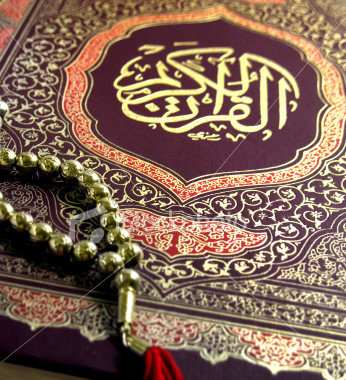




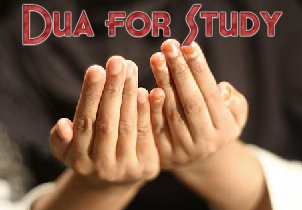






 Oh Allah,Please Forgive me
Oh Allah,Please Forgive me Ex-Christians-Now Muslim,Alhamdulillah
Ex-Christians-Now Muslim,Alhamdulillah I Love My Prophet Muhammad s.a.w
I Love My Prophet Muhammad s.a.w
















![Fake Grave of Prophet Muhammad [pbuh]](https://islamgreatreligion.files.wordpress.com/2009/07/prophet_muhammad_pbuh_tomb4.jpg)


















Recent Comments